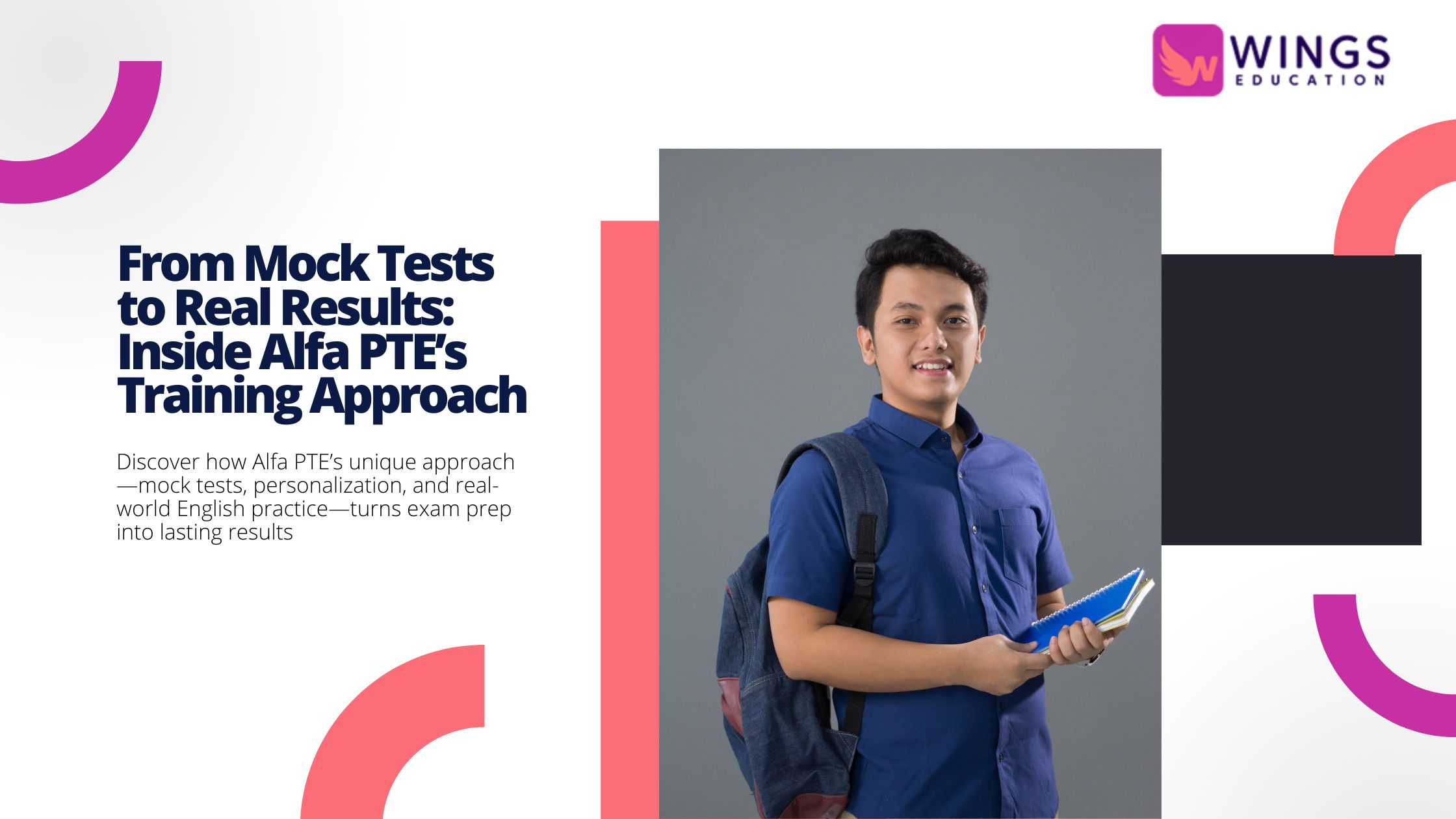
PTE Online Classes in 2025: How Digital Learning Is Changing the Way We Prepare
PTE online classes in 2025 aren’t just about practice—they’re reshaping how students learn, connect, and succeed in a digital-first world.
For years, preparing for the Pearson Test of English (PTE) meant sitting in coaching centres, flipping through practice books, and attending rigid class schedules. Fast forward to 2025, and the phrase “PTE online classes” has taken on a whole new meaning.
It’s no longer just about watching recorded lessons or attempting mock tests. Today’s online classes have become interactive, AI-driven, and globally connected experiences that mirror real-life communication. In many ways, they’re redefining what it means to “study” for PTE.
But is this shift all good news? Or are there challenges hidden beneath the convenience? Let’s explore how PTE online classes are reshaping the journey of students worldwide.
1. Why Online Learning Has Become the New Normal 🎧
The rise of digital education isn’t just a post-pandemic effect—it’s a long-term shift.
- Flexibility: Students can now prepare for PTE from anywhere—whether in Adelaide, Ahmedabad, or Abu Dhabi.
- Affordability: Many online platforms reduce costs by cutting overhead expenses.
- Access to Experts: You’re no longer limited to local trainers; you can learn from global PTE specialists.
The phrase PTE online classes now represents a broader movement where education is borderless and technology-driven.
2. The Evolution of PTE Online Classes: From Basic to Immersive 📈
A decade ago, online classes meant static PDFs and video lectures. In 2025, the scenario is completely different:
- AI-Powered Assessments – Real-time scoring that mimics the actual PTE exam.
- Virtual Classrooms – Students interact with trainers and peers across continents.
- Gamified Learning – Lessons designed as challenges, quizzes, and simulations.
- Speech Recognition Tools – Practice speaking tasks with instant pronunciation feedback.
This evolution shows that PTE online classes aren’t just a substitute for physical coaching—they’re an upgrade.
3. Why Students Prefer PTE Online Classes in 2025 🎓
a) Self-Paced Learning
Unlike traditional centres, online classes let students revisit lessons, pause, and replay explanations until they feel confident. This flexibility helps learners move at their own pace, without feeling pressured to keep up with others. They can focus more on difficult topics, revise as many times as needed, and build steady confidence.
b) Cultural Exposure
ChatGPT said:
Interacting with peers worldwide exposes learners to different accents and communication styles—perfect preparation for PTE listening and speaking tasks. This global exposure sharpens comprehension, improves adaptability, and reduces hesitation when facing unfamiliar voices in the exam. It also builds confidence in handling diverse real-life conversations beyond the test environment.
c) Instant Feedback
Many online platforms now provide automated scoring after every task, helping students adjust strategies in real time. This instant feedback highlights strengths and weaknesses, allowing learners to fine-tune pronunciation, grammar, and timing. Over time, these insights guide smarter practice sessions, making preparation more efficient and reducing last-minute exam stress.
d) Balance with Lifestyle
Part-time workers, parents, or students with packed schedules find PTE online classes easier to integrate into daily life. Flexible timings mean they can study early in the morning, during lunch breaks, or late at night. This convenience ensures consistent learning without sacrificing job responsibilities, family commitments, or academic priorities.
4. The Human Element in a Digital World
One common myth is that online classes lack personal connection. But in 2025, this is far from true.
- Live sessions with breakout rooms simulate group discussions.
- Peer forums encourage students to share notes, doubts, and strategies.
- One-on-one mentoring is integrated into many platforms.
In fact, the human touch in PTE online classes now often feels stronger because students and teachers consciously make efforts to stay connected.
5. Challenges of PTE Online Classes
It’s not all smooth sailing. Notwithstanding its benefits, digital learning has drawbacks of its own.
- Screen Fatigue: Long hours of staring at a screen can drain focus.
- Distractions at Home: Not every learner has a quiet study space.
- Internet Dependency: Connectivity issues can disrupt live sessions.
- Over-Reliance on AI: Sometimes, students forget that real-life communication isn’t always judged by an algorithm.
Acknowledging these challenges helps students approach PTE online classes with realistic expectations.
6. Busting Myths About PTE Online Classes
- Myth 1: Online classes are less effective.
Truth: With AI-driven feedback, many students now achieve better results online than offline. - Myth 2: No interaction in online learning.
Truth: Modern platforms encourage group discussions, practice interviews, and peer feedback. - Myth 3: You can’t simulate the real test.
Truth: Online mock tests replicate the exact PTE format, sometimes even more accurately than books.
When it comes to PTE online classes, the question isn’t whether they work—but how well you adapt to them.
7. The Role of AI in Shaping PTE Preparation
The foundation of contemporary PTE online courses is artificial intelligence.
- Speaking: AI analyzes pronunciation, fluency, and intonation.
- Writing: Algorithms check grammar, vocabulary, and coherence.
- Listening & Reading: Adaptive quizzes adjust difficulty based on performance.
The result? Students don’t have to wait days for feedback—they get it instantly, making the learning cycle faster.
8. Real Stories: How Online Classes Changed Student Journeys
- Raj (India): Working part-time, he couldn’t attend coaching centres. PTE online classes allowed him to study at night and achieve a score of 72.
- Sophia (Brazil): Nervous about speaking in front of examiners, she gained confidence by practicing with AI-based tools, improving her fluency.
- Ahmed (UAE): With tight visa deadlines, online mock tests helped him identify weak areas quickly and focus on scoring above 79.
These stories prove that PTE online classes are more than a convenience—they’re a lifeline for many.
9. How Online Learning Changes the Way We Think About Exams
Traditional coaching often trains students to memorize. Online classes, on the other hand, encourage:
- Analytical Thinking – Breaking down tasks into strategies.
- Self-Reliance – Tracking progress without waiting for teacher approval.
- Adaptability – Adjusting to different accents, AI evaluations, and test updates.
This mindset shift means students taking PTE online classes aren’t just preparing for an exam—they’re preparing for real-world communication.
10. The Future of PTE Online Classes
Online education’s contribution to PTE preparation will only grow in the future:
- Virtual Reality (VR) Learning: Simulating exam rooms for practice.
- Personalized AI Coaches: Tailoring lessons based on weak areas.
- Global Study Communities: Thousands of students collaborating across time zones.
- Hybrid Models: Combining online flexibility with occasional in-person meetups.
By 2030, “PTE online classes” may not feel like a category of learning—they might become the standard.
Conclusion: A New Era of PTE Preparation
By 2025, PTE online courses are more than just a practical substitute; they are a revolution in the way that students approach education.
They’re flexible yet disciplined, digital yet human, AI-driven yet personal. While challenges exist, the benefits are undeniable: accessibility, global connection, instant feedback, and adaptability.
If traditional coaching was about structure, online classes are about empowerment. They give students the freedom to shape their own preparation journey—something that’s more valuable than any textbook or classroom.
So, when we talk about PTE online classes today, we’re not just talking about a mode of study. We’re talking about the future of education itself.























